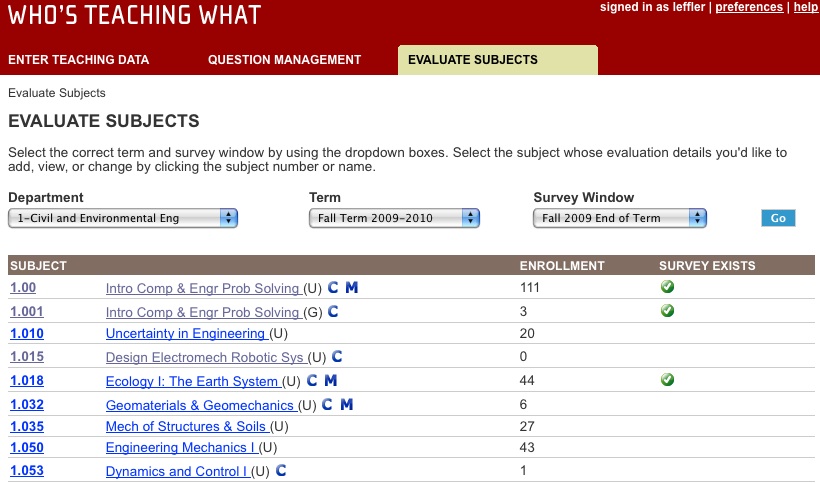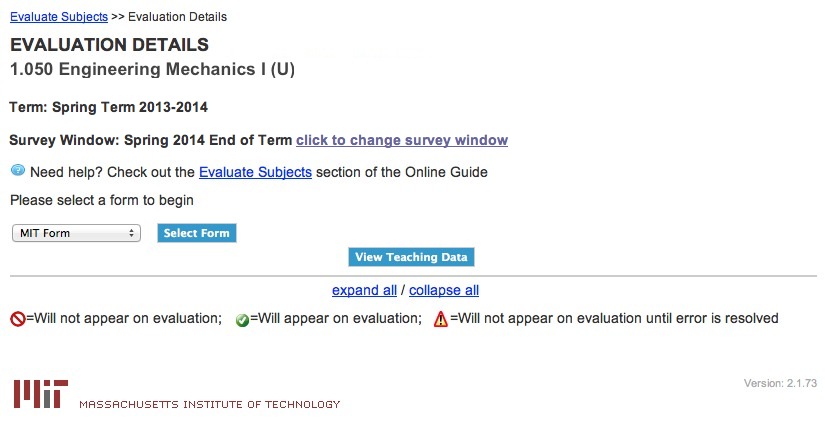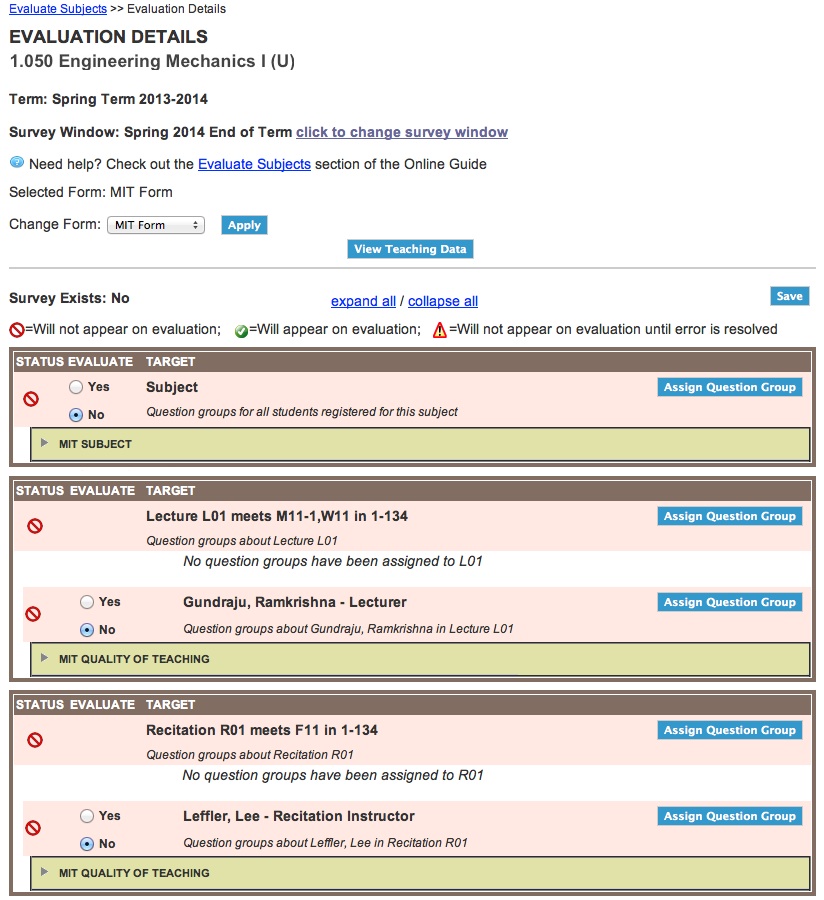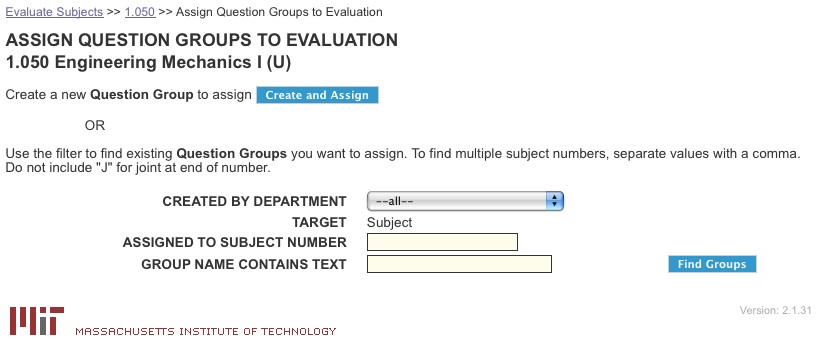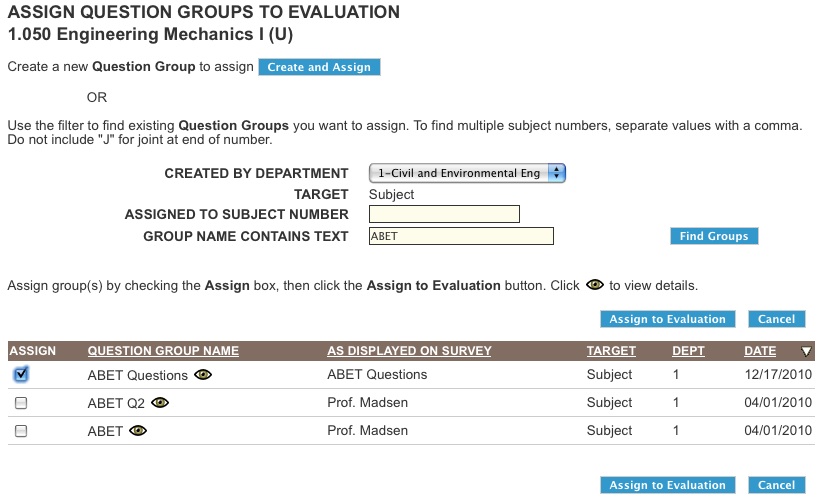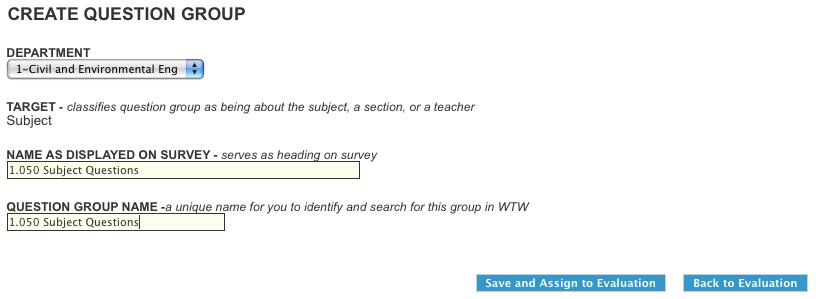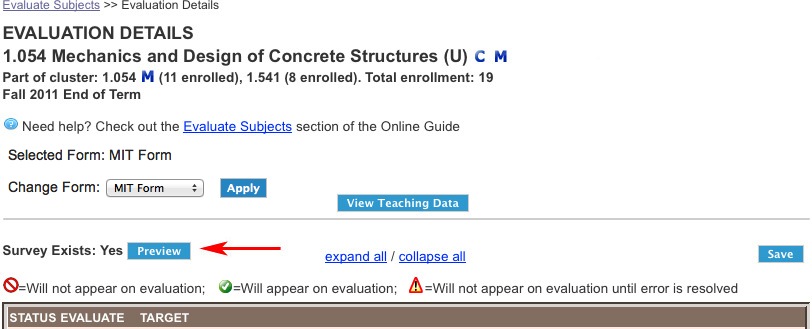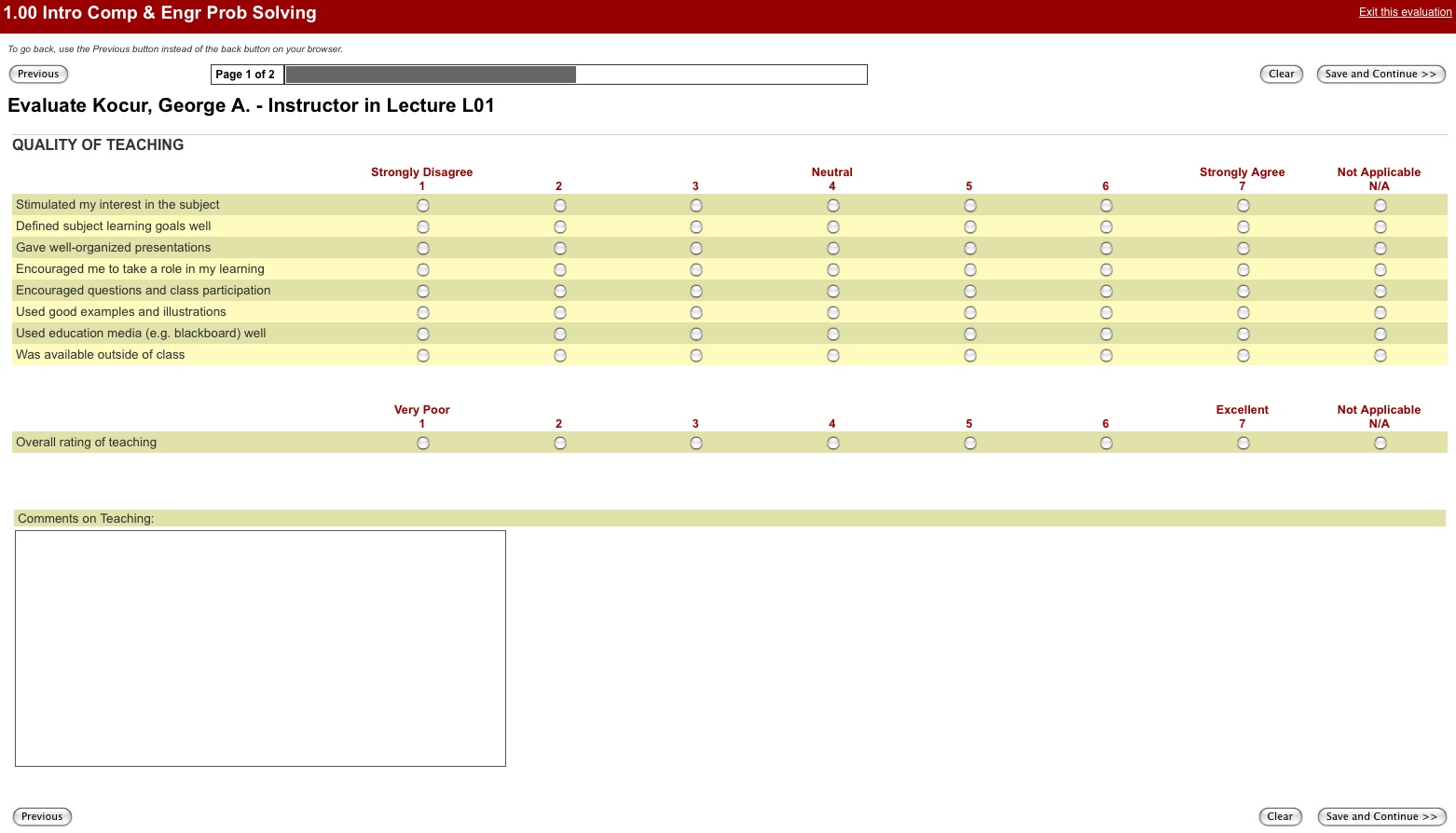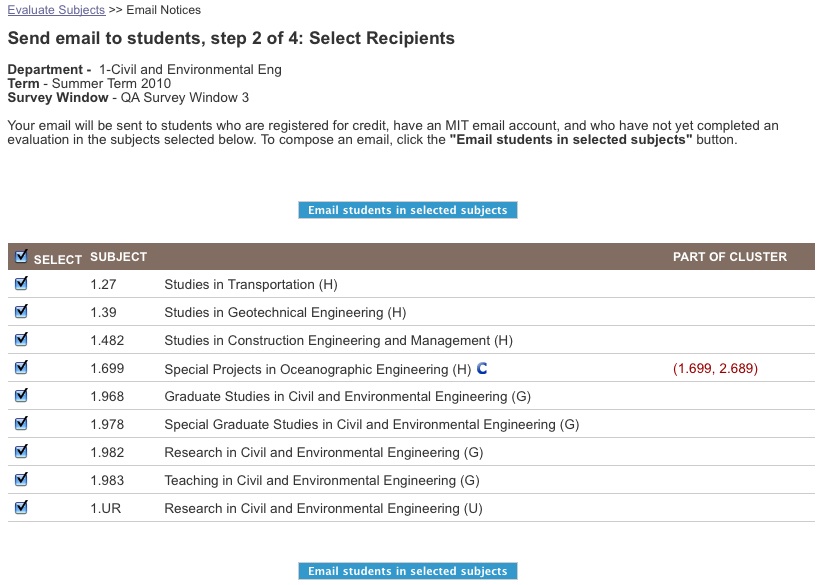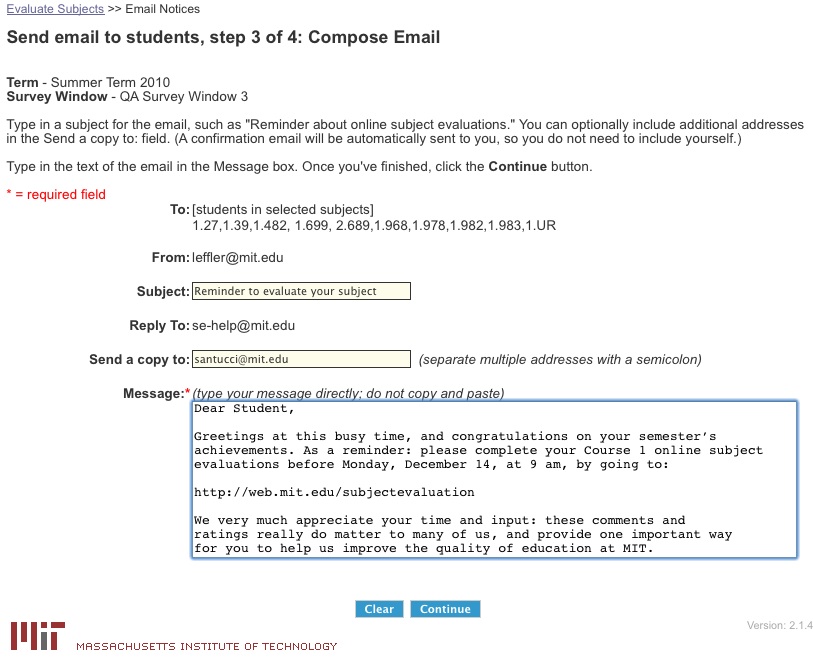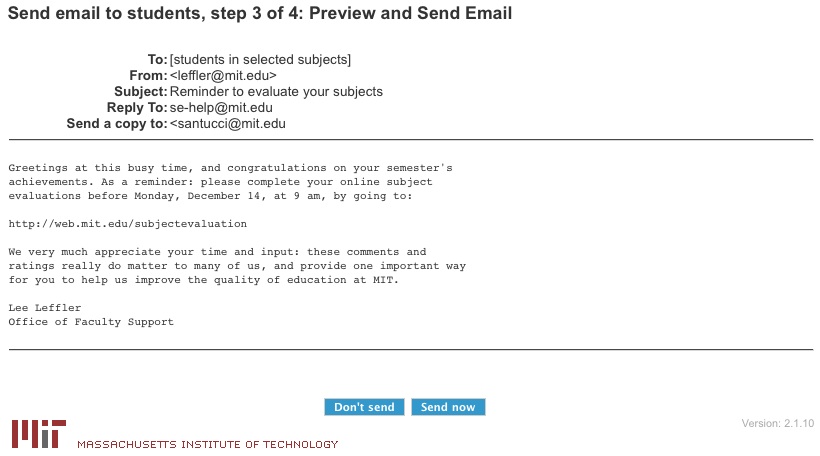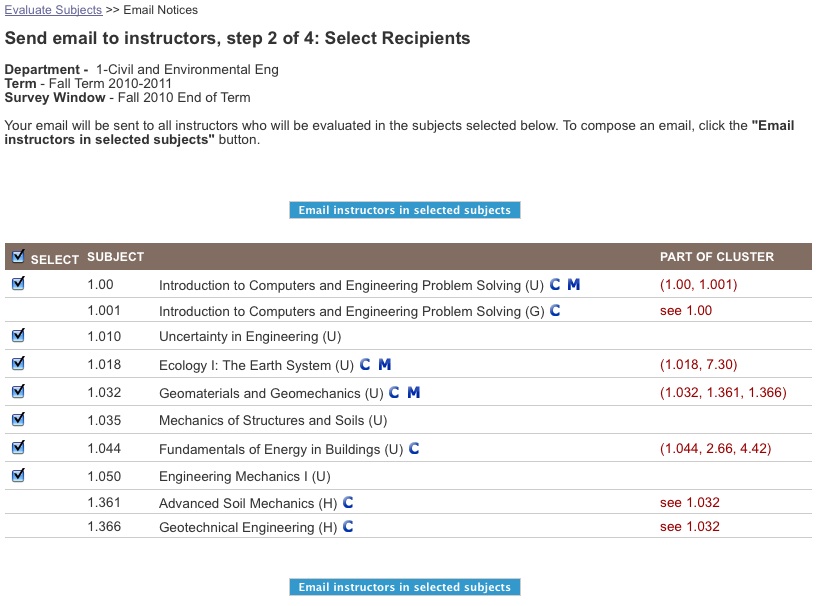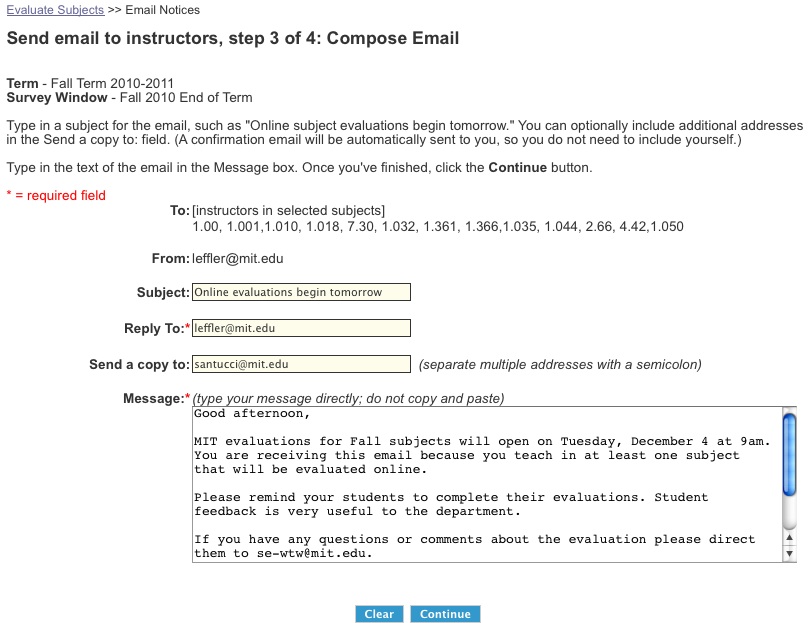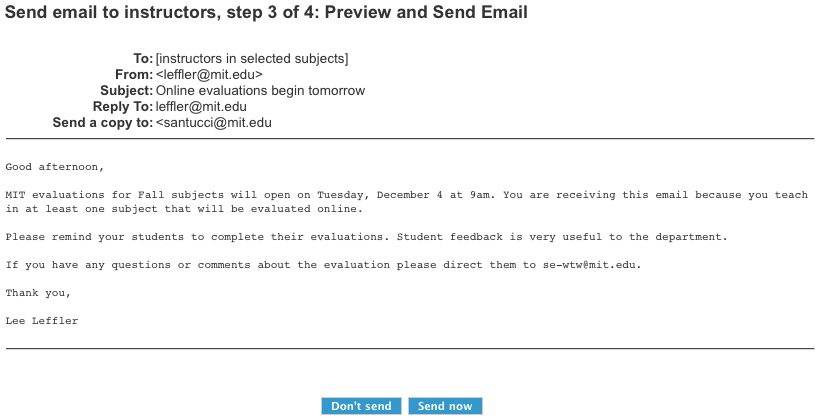Like the Enter Teaching Data page, the Evaluate Subjects page displays an interactive list of all subjects offered within a given academic term for a specific department. From this page you can access details for subjects in your department and indicate:
- which subjects and teachers to evaluate
- which question groups will appear on evaluations
- the order that question groups will appear on the evaluation
To access your department's Evaluate Subjects page:
1. Click the "Evaluate Subjects" tab at the top of the page. The color of the tab changes once you've selected it.
2. Make sure the correct department displays in the Department box. This field should default to your department. If you work in more than one department, select the department from the drop down list. If needed, select the correct term (the current term is the default) in the Term box.
3. Make sure the correct survey window (e.g. Fall 2009 End of Term) displays by selecting from the drop down box. There may be more than one survey window in the drop down list, because a department may have both mid-term and end-of-term evaluations.
3. If you have made a change to department, term or survey window, click "Go." The Evaluate Subjects page displays for the specified department, term and survey window:
The Evaluate Subjects list has three columns:
- Subject: Subjects display in ascending order by subject number. The name of the subject appears to the right of the subject number. If the subject is part of a cluster (e.g. a "joint" or "meets with" subject) a C will display after the subject name. If the subject is the master within the cluster (responsible for entering teaching data) an M will also display.
- Enrollment: The total number of students registered for credit or as listeners in the subject make up the enrollment number.
- Survey exists: A green checkmark icon appears in this column when the corresponding subject:
- has been flagged for evaluation
- has at least one survey question assigned
- has obtained Registrar approval for any new sections (or any room and time changes to existing sections) that are to be evaluated this term
4. To access the evaluation details for a subject (where you'll flag subjects and teachers for evaluation, assign or remove question groups, and change the sort order of assigned question groups) click the subject number or name. The Evaluation Details page will display for the subject selected.






